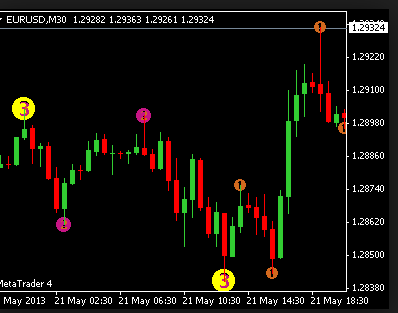ShortTerm Trading Tools
Post on: 9 Июнь, 2015 No Comment

Online Trading Academy, Chief Education, Products, and Services Officer
Its the first week of the month in Extended Learning Track (XLT) class. This is always a good week because new traders get exposed to the lessons that will shape their trading strategy for years to come. While they dont know it yet, I know that what they learn in week one is the key ingredient for their success. Using price action alone, we cover exactly how to quantify demand (support) and supply (resistance), the odds enhancers that give us our objective probability score on each trading opportunity, and a set of rules for entry and exit during week one. The information we cover is applicable in any time frame which allows us to keep things very simple and rule-based.
I really dont use any indicators or oscillators myself and dont make them a major part of the Extended Learning Track (XLT) class, but for those who do, I have a trading page we look at in class each day that has Bollinger Bands® and a moving average on it. We dont by any means abandon our strategy when we view this page for trade setups, we simply apply a similar set of rules to these market indicators. For your benefit, I will review two short-term Forex trades from the class this week using Bollinger Bands®, a moving average, and demand and supply. Why use these tools?
Bollinger Bands®: This is a standard deviation tool that when combined with demand and supply, can assist in letting me know when a market is momentarily too high or too low. Think of stretching the rubber band and you will understand Bollinger Bands®.
Moving Average: A moving average is a tool we can use to help gauge the trend of average prices. This tells us what side of the market carries the greatest odds. In an uptrend, we want to be a buyer and buy from a novice seller who is selling after a decline in price, within an uptrend and the opposite when we sell short.
Demand and Supply: Recognizing where the most willing and able buyers and sellers are on a price chart is one of the most important pieces of information for the astute trader.
Combining these three tools allows us to objectively assess probability, risk, and reward for a trading opportunity. We could add more indicators and oscillators to this mix but why complicate things when we dont have to?
Above is a chart of the Euro/US Dollar. A represents a demand (support) level. This is because price rallied so strong from area A. Price can only rally like that from A because there are so many more willing buyers than sellers at A, demand exceeds supply. Next, notice the up-sloping blue line on the chart which is a simple moving average. It is sloping up meaning this market is in an uptrend in this time frame. At B, price is now revisiting our objective demand level A. This means that someone is selling AFTER a decline in price and AT a price level where demand exceeds supply. A seller making these two mistakes is going to lose much of the time according to the laws of supply and demand. But thats not all. They are committing more than those two mistakes. They are also selling in an uptrend; mistake number three. But thats not all. Another mistake they are committing is that they are selling as price pierces the lower Bollinger Band®. A seller who is committing these four mistakes is taking the lowest probability action you can take in a market. By using tools to identify this novice action, we have just found a way to take the highest probability action in a market. In short, we want to buy from that novice seller at B which is into demand zone A. The risk is low, the reward is high, and the probability of success is very strong.














